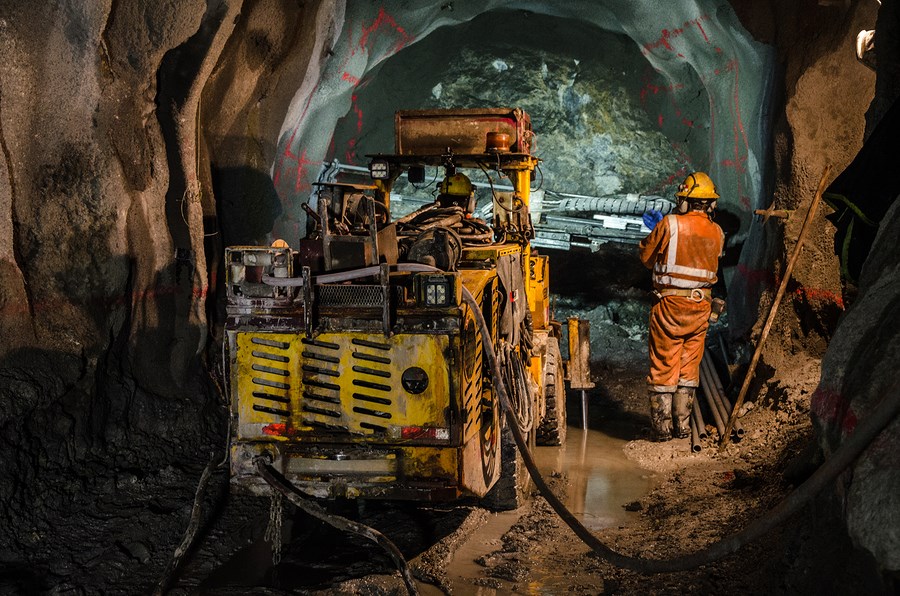The public now knows more about Foran Mining’s plans with the company’s McIlvenna Bay mine project.
The company released their pre-feasibility study results showing plans for a possible mine, production, on-site facilities and possible future actions.
Foran lists the probable mineral reserve for McIlvenna Bay at around 11.34 million tonnes at a net smelter return of $100 USD per tonne, estimating average annual zinc and copper production at around 89.2 million pounds of zinc and 27.9 million pounds of copper.
Foran estimates the pre-tax net present value for the project at around $219 million with a 7.5 per cent discount rate and a 23.4 per cent internal rate of return.
“When we first invested in Foran, we envisioned McIlvenna Bay as being the centre of operations for a new mining camp. A number of mining executives and friends shared our vision and invested with us in financings as we advanced the project,” said Foran president and CEO Patrick Soares in the company’s pre-feasibility study results release.
In the results, Foran states they have done more than 115,000 metres of diamond drilling on more than 230 holes on the project site. The site includes both a large sulphide lens that Foran states is high in copper and zinc and another copper stockwork zone underneath the sulphide. The first stage of mining, if the project reaches production, will focus on the upper sulphide lens.
Testing on the site began in 2012, with a number of drilling and further exploration campaigns held over the past eight years.
Foran foresees a ramp-access underground mine with a nominal zinc and copper production rate of around 3,600 tonnes per day. The company’s current plan for process plant concentrate is to ship it offsite to Flin Flon, then to copper and zinc smelters.
“The mine will utilize modern technology (BEV haul trucks and a vertical conveyor) to bring ore to surface as feed for an on-site processing plant of equivalent capacity. Process plant tailings will be de-sulphurized, filtered and either used for cemented backfill or deposited on a small (5-6 Mt) dry stack tailings facility,” says the study results.
The project plans include on-site offices, mine dry, workshops, fuel storage, a paste plant and water treatment facilities. Electricity for the project will come from an overhead powerline running from Pelican Narrows, located about 65 kilometres north of the mine. Plans are currently afoot, according to the company’s study results, to twin the existing line from the community to provide more power to the mine site.
Foran planned at one point to reach an agreement with Hudbay to process concentrate and store tailing from the site at the company’s Flin Flon facilities. That plan now appears to be out of the question, with Foran citing high costs and environmental risk as the main reason for change. Instead, Foran will be processing some ore at the McIlvenna Bay site before shipping it out.
“As the feasibility study work advanced during 2019, it became clear that the cost of toll milling in Flin Flon and the related costs of tailings storage would create disproportionate commercial and environmental risks while decreasing the economic viability of the project,” reads the results.
“On-site processing requires additional pre-production capital but lowers operating costs, provides independence to the operations and enhanced developmental flexibility to construct a long-lived mine at McIlvenna Bay.”
Not every I is dotted and not every T is crossed. Some steps still need to be taken to get McIlvenna Bay to a full feasibility level.
“In order to advance the project to a definitive feasibility study level, further detailed engineering and cost optimization must be undertaken for the on-site processing facilities and the dry stack tailings impoundment,” said the results.
“This work is planned to start in earnest along with further optimization of the mine plan and cut-off calculations which is expected to provide additional upside for the project.”
Other improvements for the project include minor upgrades for the access road into the project area and an on-site water collection system where water from the site will be treated and recycled where possible to use in processing and underground.
Under current plans, about half of the tailings from the site will be reused as paste backfill for the project’s underground operations, with the remainder stored on site as a dry stack tailings facility.
“Tailings will be de-sulphurized to reduce the potential for acid generation, and then filter pressed to optimum moisture content prior to hauling and placement into the tailings facility. The facility will be located within the footprint of a previously operated frac sand quarry located within approximately one kilometre of the mill which will minimize overall project impact on undisturbed areas,” reads the Foran report.
The company’s next listed steps for the McIlvenna Bay project are to advance to a full feasibility study and discuss possible development with potential partners. The company signed a deal with Anglo-Swiss mining giants Glencore in 2017 to provide a feasibility study for McIlvenna Bay in exchange for zinc and copper offtake from a future mine at the site.
Resource estimates for the site remain the same as the latest company release, which came out in May 2019.
The pre-feasibility study results come more than three months after Foran predicted completion of a full feasibility study for the McIlvenna Bay project. As late as last June, Foran had anticipated having a full study by the end of 2019.




